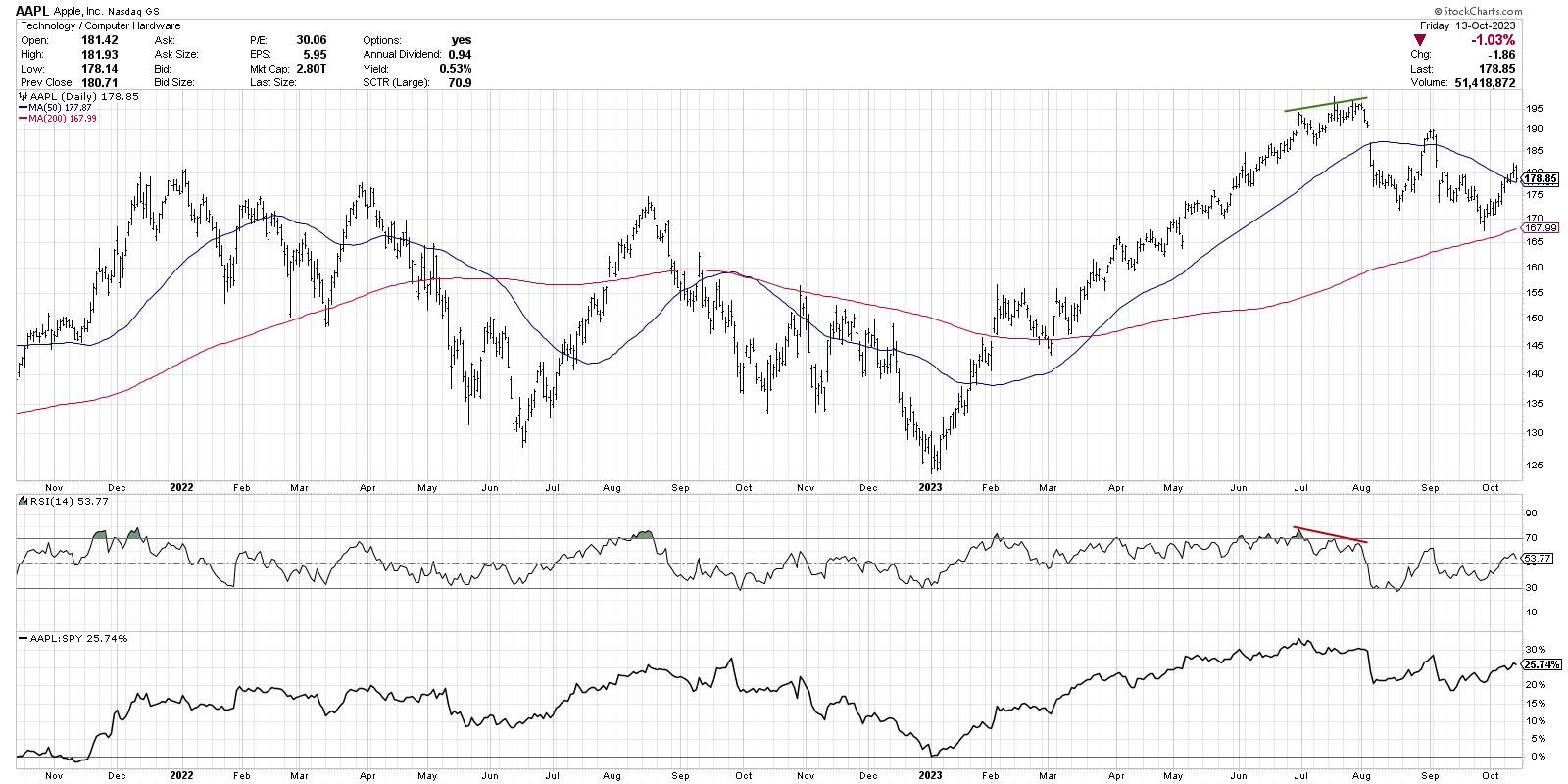I have found that novice investors think of technical analysis as fairly homogeneous. At the end of the day, technical indicators are just basically analyzing price patterns, right?
Technical analysis is actually comprised of a fairly diverse set of tools to help investors understand investor sentiment by analyzing price and volume trends. While the common thread for technical analysis is a focus on the markets themselves (through price and volume) as opposed to factors that often influence market activity (for example, fundamental or macroeconomic analysis), it turns out that there are many different ways to quantify investor sentiment through charts.
In this article, we’ll talk about two main categories of technical indicators, how leading and lagging indicators represent different approaches to price analysis, and how we can apply these concepts to the current chart of Apple Inc. (AAPL).
Leading vs. Lagging Indicators
I like to classify technical indicators into general buckets: leading indicators, which are designed to anticipate a change in trend, and lagging indicators, which are more confirmational and tell you when a trend has actually reversed.
These two categories remind me of the broader labels of growth vs. value investing. Growth investors tend to buy strong companies in the hope that they will continue to grow earnings over time. Value investors, on the other hand, tend to invest in companies trading for less than what they are worth based on some valuation assessment.
There isn’t necessarily a “right” or “wrong” way to invest, but there are different periods where growth or value approaches will tend to be more successful. The same can be said for the different types of technical indicators, and, for many investors, a balance of leading and lagging investors is probably the best approach.
I tend to favor lagging indicators in my own technical work, although I do employ some leading indicators as well. One indicator in particular, the Relative Strength Index (RSI), combines both leading and lagging capabilities to help define the trend and recognize trend shifts.
RSI as a Leading and Lagging Indicator
Toward the end of a bullish phase, the price will often continue higher, while a momentum indicator like RSI actually rotates lower. This indicates a lack of upside momentum and indicates that the uptrend may be nearing its end. This is where RSI can help anticipate potential turning points, as the signal occurs while the current trend is still in place.
Let’s review the chart of Apple going into its July high.
Note the consistent uptrend that began in January, providing a sudden reversal from a bearish Q4 2022. When AAPL made another new high in late June, the RSI spiked up to almost 80. During subsequent price highs in mid- and late-July, the RSI peaked around 70 and 65, respectively.
This “bearish momentum divergence” suggested that while the price of Apple was still going higher, the bullish momentum propelling the price action was beginning to dissipate. Sure enough, AAPL gapped down below its 50-day moving average soon after, beginning a bearish phase that may still be in place today.
RSI can also be used as a lagging or trend-following indicator, designed more to validate a potential price reversal you’ve already observed. Notice how, during the first half of 2023, the RSI remained in the 40 to 80 range? This range is more characteristic of a bullish trend than a bearish trend.
Now look at how the entire range of the RSI pushed lower starting in August, with the RSI now rotating between 20 and 60. This shift to a more bearish range could have helped a savvy investor rotate to more defensive positioning.
Outlook for AAPL
Since the July peak, Apple has now entered a downtrend comprised of lower highs and lower lows. The RSI became oversold during the August low, but was not oversold at the September low. Now we are observing a bullish momentum divergence, providing a leading indicator of a potential change in trend.
Considering the weight of the evidence, I’m seeing the price in a clearly defined downtrend channel. The low in September came at a confluence of support, just above the 200-day moving average and right around the 38.2% Fibonacci level. Now the stock is giving a second attempt at pushing above the 50-day moving average, after an unsuccessful attempt in late August.
While the RSI divergence tells me to be ready for a reversal, the clearly defined downtrend in price on weak momentum compels me to remain on the sidelines. A break below that confluence of support around $168-170 would validate the bearish thesis and suggest further downside into year-end 2023.
As a trend-follower, I have always felt that my main goals are threefold:
Define the trend Follow that trend Anticipate when the trend is exhaustedBy combining both leading and lagging technical indicators into your toolkit, you will be best prepared for changing market environments and trend reversals!
RR#6,
Dave
P.S. Ready to upgrade your investment process? Check out my free behavioral investing course!
David Keller, CMT
Chief Market Strategist
StockCharts.com
Disclaimer: This blog is for educational purposes only and should not be construed as financial advice. The ideas and strategies should never be used without first assessing your own personal and financial situation, or without consulting a financial professional.
The author does not have a position in mentioned securities at the time of publication. Any opinions expressed herein are solely those of the author and do not in any way represent the views or opinions of any other person or entity.























